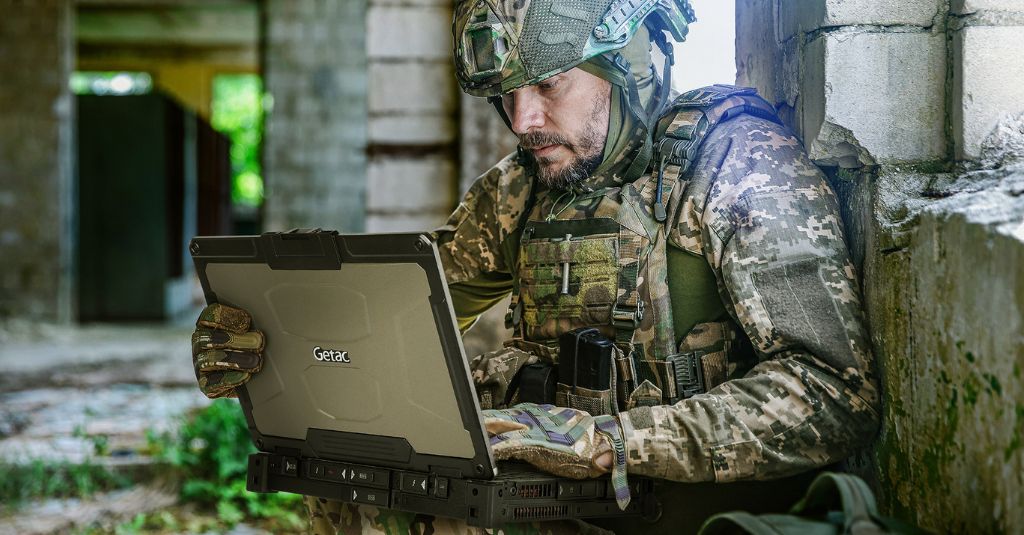Frank Baldrighi is Getac's Business Development Manager in Australia and New Zealand. Frank has over 15 years' experience in the tech industry, specializing in partner sales strategy and direct business relationships.

Getac Select
A combination of rugged computing devices, software, accessories and professional services in a purposeful range of specifically tailored solutions.
Getac Video Solutions
Video capture, evidence management, rugged hardware and robust software solutions for law enforcement and other industries.
Defense
Mission-critical COTS computing that delivers high powered processing and reliability in operational environments
Public Safety
Law Enforcement, EMS, Fire & Rescue applications
Utilities
Smart Meter Reading and Installation, On-site Safety, Utility Asset Management, Workforce Management for Utilities, Mobile GIS, Surveying and Mapping
Transportation & Logistics
Railroad Management, Airport Management, Port Management, Long-haul Delivery Fleet Management, Warehouse Materials Handling
Industrial Manufacturing
Industrial Programming and Robotic Control, Facility management, Compliance and Inspections, Workforce Management, Inventory and Warehouse Management, Factory Automation and Plant Monitoring, EAM and CMMS Solutions.
Automotive
Optimized Rugged Mobile Solutions to drive a smarter approach throughout the automotive value-chain.
Natural Resources
Mining, Forestry and Construction applications
Oil & Gas
Remote Support, Asset Management, Field Data Analysis, Workplace Safety
According to VDC, roughly 75-95% of the cost of an enterprise-use tablet is incurred after the initial purchase. IT downtime plays a major component in that percentage of the total cost of ownership (TCO). However, downtime is a deceptively simple term. Lost user productivity only comprises a small percentage of the total cost of a device incident. Other factors that come into play include:
Analysts and consultants wrote about IT downtime when it was still largely confined to the office without the pandemic and other vital context in the mix. A single downtime incident can cost thousands of dollars overall. But that’s not the end of the story. Digital transformation is moving beyond the office to the frontline (where failures happen more often). If you’re considering a tablet or notebook purchase for use in the frontline, field service, or other outside-the-office scenarios, the IT downtime equation may be more complicated than you originally thought.
Rugged devices generally cost more upfront than their non-rugged counterparts. It’s common to wonder whether you can get by with a non-rugged option. Despite mobile rugged devices often being sold in TCO terms, VDC data indicates that TCO is only a middling consideration in the real world (which they attribute to their TCO not being very well understood). The top consideration is hardware reliability, and there is no doubt that rugged devices are generally more reliable.
According to the same VDC study, non-rugged tablets fail two to three times more often than rugged tablets annually over the course of their lifetimes. This is a major contributor to their USD$4,577 annual TCO, with rugged tablet TCO slightly over half of that.
If you have frontline or field service mobile devices in use, the good news is that mobile IT trouble ticket times decreased by 23% from 2018 to 2021. This indicates organizations and their IT departments are getting better at resolving problems. However, the bad news is there are other trends at play that may see the costs of each failure increase.
Remote and hybrid work arrangements are now the norm. There's also a heightened concern regarding device surfaces as vectors for spreading germs. It has become more onerous and time-consuming to hand over a malfunctioning device to the IT department, and vice-versa. Both trends make rugged devices more attractive. This is especially true with over 60% of relevant organizations now either committed to or likely to move away from shared mobile devices and towards employee-issued mobile devices.
With your IT infrastructure becoming increasingly interconnected, the rapid dissemination of misinformation, and IT incidents (e.g.: a tablet failure on the frontline) can likely damage your organization’s reputation.
In the wake of digital transformation and IoT adoption, the sheer number of devices that your organization’s IT department must deploy, manage, maintain, and repair is growing fast. Bridging this gap can often take more than simply spending more money. Cybersecurity skills are still relatively hard to find, as are people who are proficient in whatever legacy technologies you may be using.
In essence, there’s a good chance your in-house IT people are stretched thin. This means that when one failure occurs, some other issue runs the risk of being ignored. If a laptop battery goes dead, that deployment-wide security update you had scheduled might be delayed. This can lead to even bigger problems.
In part because of the pandemic, and in part because of a recent wave of retirements in many sectors and industries, many field service tasks that were once done by teams or pairs are now being done by individuals. This has increased the need for remote guidance. It’s also increased the use of onsite video-based training. Novices can watch an instructional video on their mobile devices as they carry out real-world repairs.
In both scenarios, a device failure doesn’t just mean that the job still gets done but slower. Workers who may be tech-savvy but not proficient in the old-fashioned way of doing things can impact productivity in your organization.
Both remote guidance and video-based training also draw attention to the fact that network connectivity is only growing in operational importance. In fact, it’s the most common use case for mobile device analytics. It's even more common than device location or battery health.
Simple connectivity disruptions are not trivial. It costs 23 minutes of productivity each, with nearly one in four leading to a failed application session (i.e., having to start over again). With augmented reality (AR) and advanced drone and robot applications either starting to arrive or on the horizon in many industries, the more the wireless reliability and redundancy you get with a rugged device make sense.
Of course, not all incidents of IT-related downtime are because of malfunction, damage, or failure. Sometimes the equipment is hard to learn, hard to use, or hard to acclimate to. With labor shortages and seasonal hiring, both issues in many frontline industries, intuitiveness, ease of use, and employee comfort are all prime reasons why non-rugged devices sometimes win out over rugged. But things are changing here as well. Users have been increasingly adopting Android as a rugged operating system. One of its many benefits includes bringing mobile intuitiveness to rugged devices more in line with smartphones. There's also a growing number of rugged options available that aren’t overly heavy or cumbersome. Most Getac tablets start at less than one-inch thick, with notebook models available that start at under five pounds.
With all of these benefits to account, rugged doesn’t have to be an undue burden anymore and so neither does IT downtime.

Frank Baldrighi is Getac's Business Development Manager in Australia and New Zealand. Frank has over 15 years' experience in the tech industry, specializing in partner sales strategy and direct business relationships.


